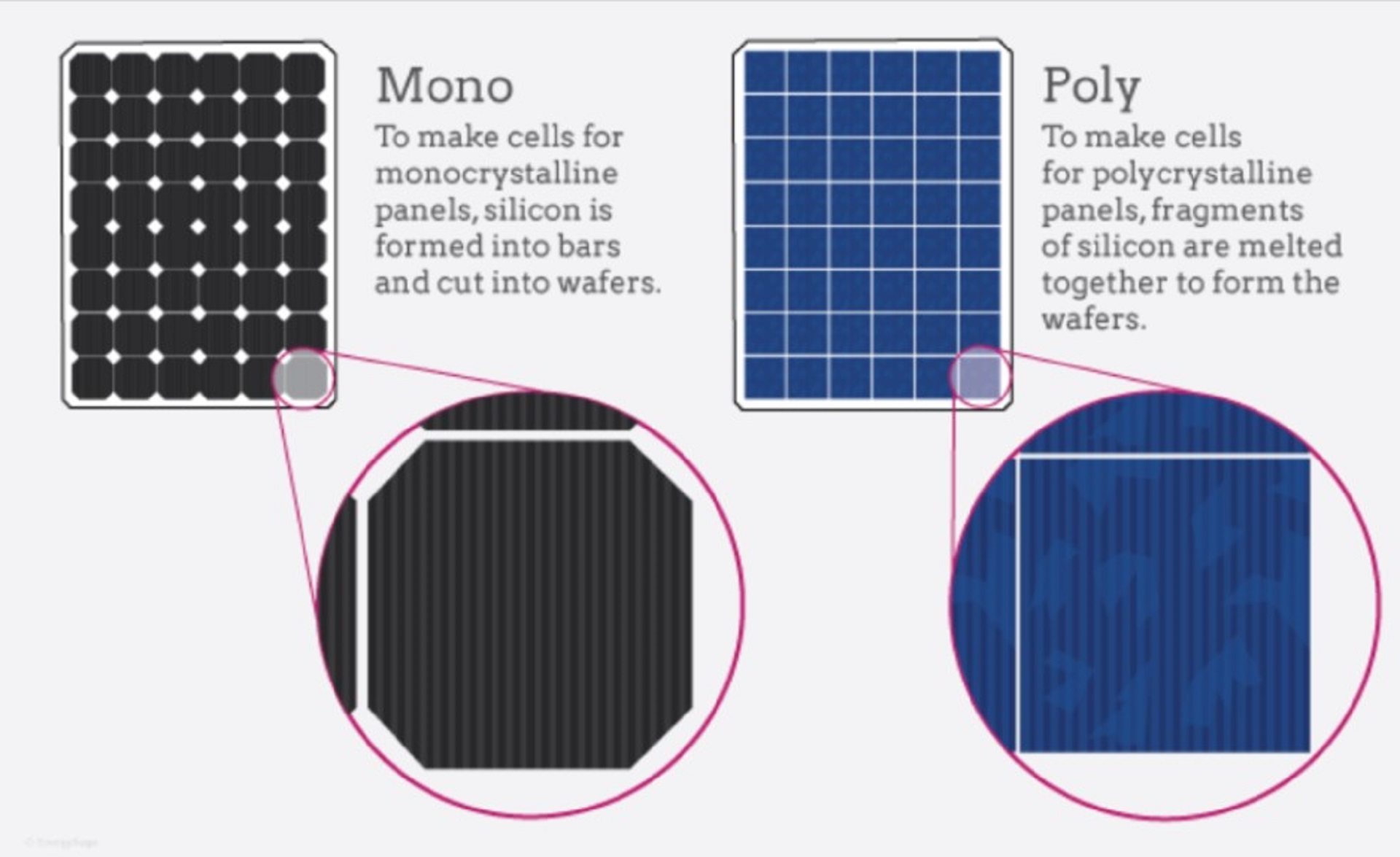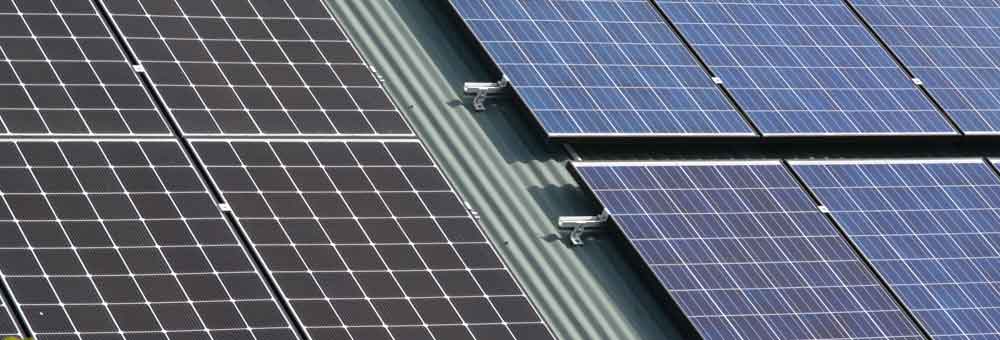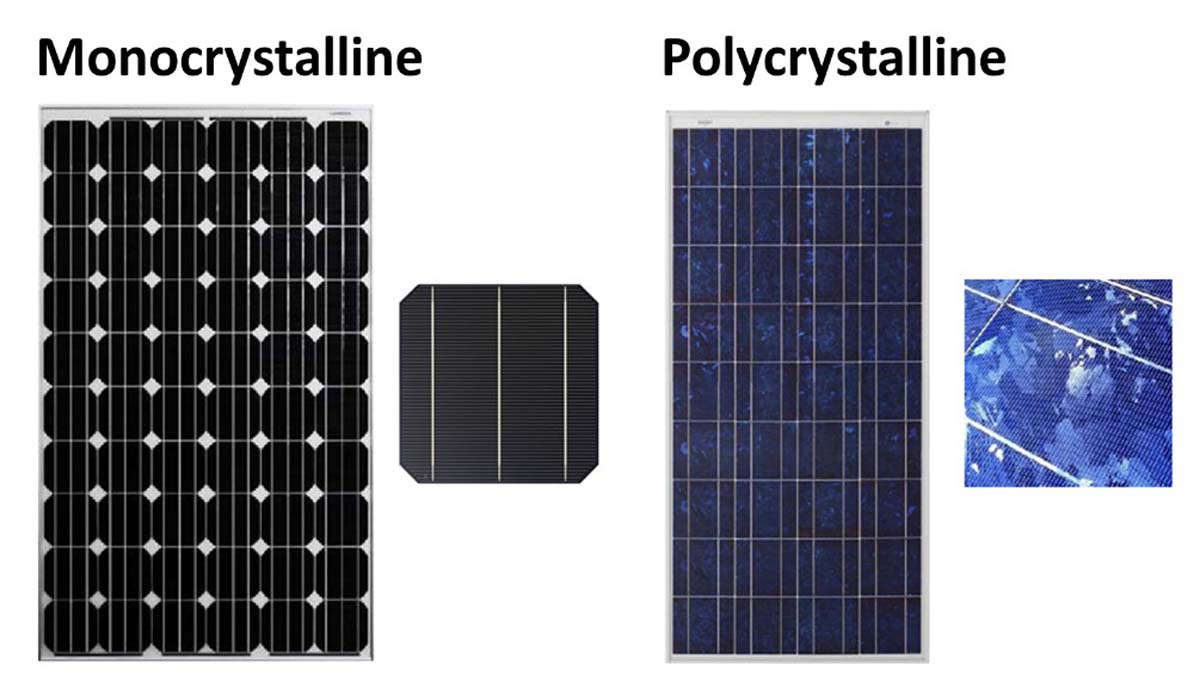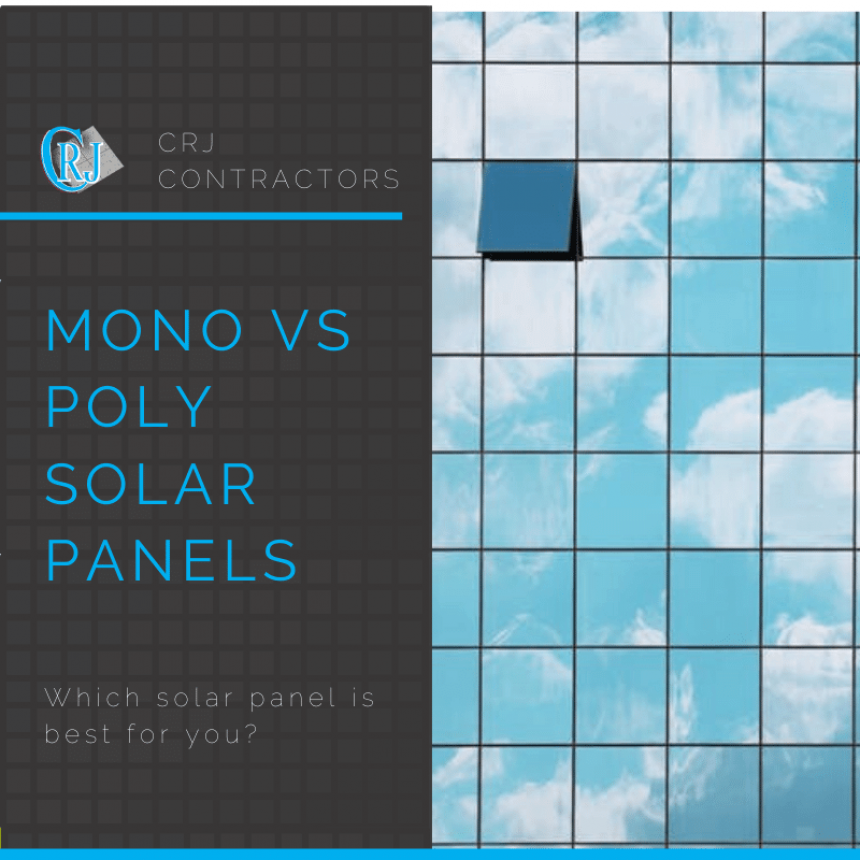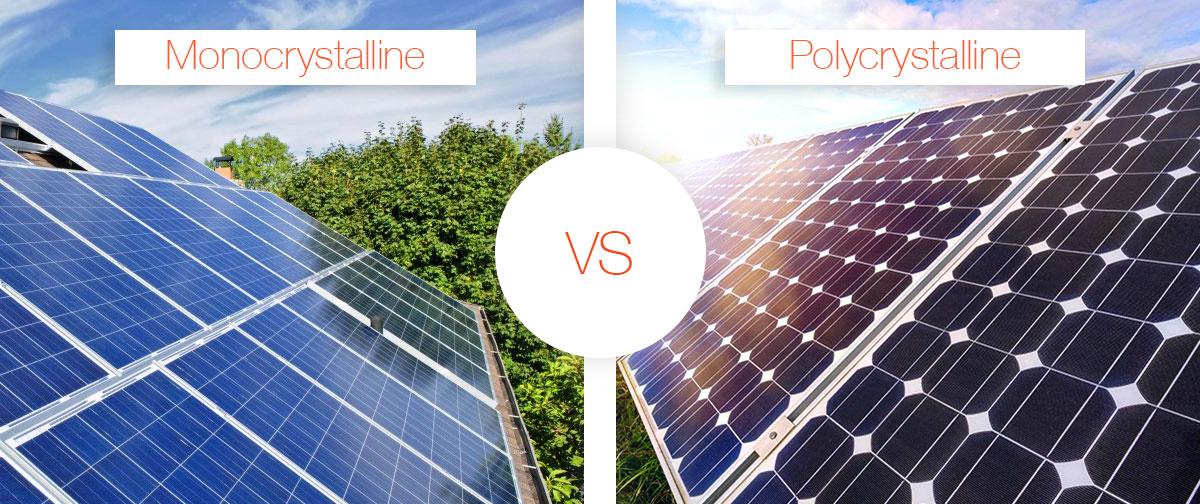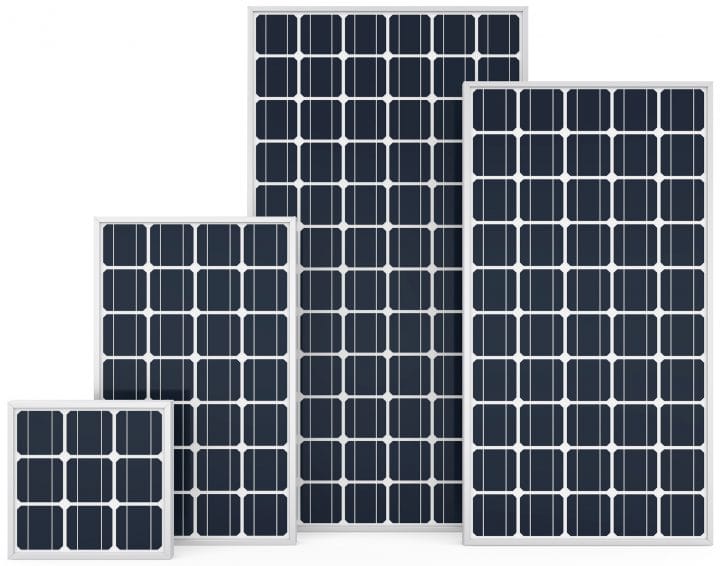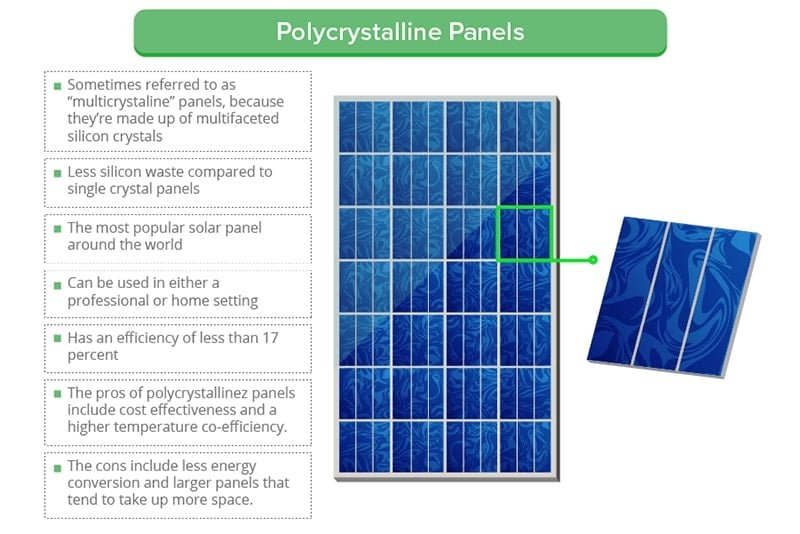In addition polycrystalline solar panels tend to have a blue hue instead of the black hue of monocrystalline panels.
Monocrystalline versus polychrystaline solar panel.
Monocrystalline solar panels comprise of silicon as a single crystal.
However polycrystalline solar panels are relatively cheaper than monocrystalline panels.
The multiple silicon crystals in each solar cell makes it harder for electrons to flow.
Monocrystalline solar panel manufacturers will usually offer a 25 year warranty because of the longer lifespan of the product.
Polycrystalline panels have about 13 to 16 efficiency while monocrystalline panels have an efficiency rate of anywhere from 15 to 20.
The solar panels monocrystalline and polycrystalline are both important.
On the other hand polycrystalline panels are included in many fragments of silicon melted together.
Polycrystalline solar panels are also made from silicon.
You would need a much larger array of polycrystalline panels to produce the same amount of energy than if you used monocrystalline which may not work for households with limited roof space.
However it is for you to decide on a good brand.
Depending on the size and quality of a solar panel the price of polycrystalline panels ranges from 60 to 90.
Polycrystalline panel efficiency ratings will typically range from 15 to 17.
On this parameter of lifespan polycrystalline solar panels are not very different but the warranty period offered by the manufacturers may vary.


